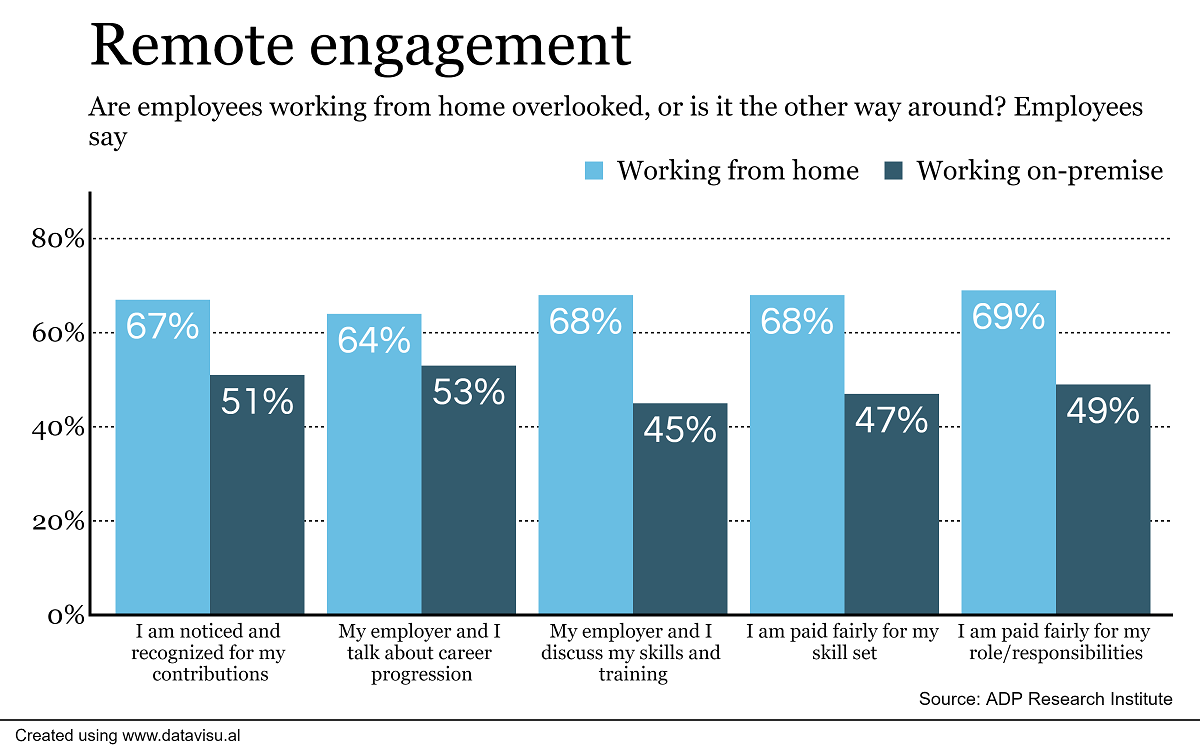For the past three years, the ADP Research Institute has surveyed more than 32,000 members of the global workforce to capture the seismic shifts in worker sentiment during the COVID-19 pandemic.
A year ago, the survey revealed that the pandemic had affected two-thirds of the global workforce through lost jobs, furloughs, pay cuts, and reduced hours and responsibilities. This year, it shows that while the global job market has begun to rebound, labor shortages and concerns about job security and other work-related uncertainties have only worsened.
“The pandemic signaled a paradigm shift as today’s workers re-evaluate the presence of work in their lives, and the stakes have never been higher for employers,” says Nela Richardson, chief economist for ADP. The survey, “People at Work 2022: A Global Workforce View,” also highlights the extent to which employee views of work have changed, now prioritizing a wider and deeper range of factors that are more personal in nature, she says.
 “With recruitment and retention among the most business-critical issues, these revelations offer both a challenge and an opportunity for employers as they seek to keep workers engaged and fulfilled,” she says.
“With recruitment and retention among the most business-critical issues, these revelations offer both a challenge and an opportunity for employers as they seek to keep workers engaged and fulfilled,” she says.
More than half of workers surveyed consider job security important, for example. But only one in four said their job or industry was secure, Richardson says.
“That’s worse than a year ago when more than one in three people said their jobs were secure,” Richardson says.
With elusive job security, she notes, workers appear to be redefining job security on their own terms, and they’re seeking more than a steady paycheck. The desire for flexibility has become widespread, with 71% of respondents saying they’d like more control over when and where they work. Half of the respondents said they’d even take a pay cut to achieve a better balance between work and home life, according to the survey.
Related: The top reasons to tread carefully with your return-to-office plans

Richardson says that’s one major reason hybrid and remote options are becoming post-pandemic mainstays, as employers reconsider and reconfigure permanent work arrangements.
“Early on, there was concern that once workplaces reopened, employees who remained remote would be at a disadvantage,” she says. “Face-time and water cooler chit chat would again drive career progression and homebound employees would slip down the career ladder, the thinking went.”
However, this survey counters that narrative with a surprising finding: Remote workers were resoundingly more positive about their career prospects than their on-site colleagues. In fact, nearly 70% of remote workers said they were paid fairly for their roles, responsibilities and skillsets. More than two-thirds said they discussed training, development and career progression with their employers. In contrast, less than half of on-site workers made the same claims.
“The concern now is that remote workers, who are often more skilled and higher paid, are being given more attention—good and bad—by employers,” she says.
Richardson believes that those sentiments are important considerations for employers with both remote and onsite employees, noting that consumer-facing jobs in retail, restaurants and hotels were hit hard by the pandemic and took a disproportionate share of job losses.
Also see 4 new onboarding frameworks to help prevent ‘The Great Regret’
“They’ve also struggled to regain headcount during the recovery because many jobs in these sectors are hindered by low pay and high turnover,” she says, adding that rather than overlooking remote workers, employers are at risk of setting up a two-tier class system in which remote workers are acknowledged and paid appropriately, while on-premises workers struggle for parity of attention, pay and advancement.
 “Employers need to ensure that employees required to commute to the workplace are valued and provided similar opportunities for career development and progression,” she says. And, just because a worker is required to be on-site doesn’t mean companies can’t provide other means of flexibility. For example, she says, they can offer alternatives such as condensed workweeks, sabbaticals and worker autonomy over scheduling.
“Employers need to ensure that employees required to commute to the workplace are valued and provided similar opportunities for career development and progression,” she says. And, just because a worker is required to be on-site doesn’t mean companies can’t provide other means of flexibility. For example, she says, they can offer alternatives such as condensed workweeks, sabbaticals and worker autonomy over scheduling.
“In short, as workers redefine job security to include flexibility, employers will be challenged,” she says. “They’ll need to institute fair pay and promotion practices and other ways to appropriately value the contributions of their workers, wherever they might be.”
The post Why your on-site workers worry as you tend to remote employees appeared first on HR Executive.